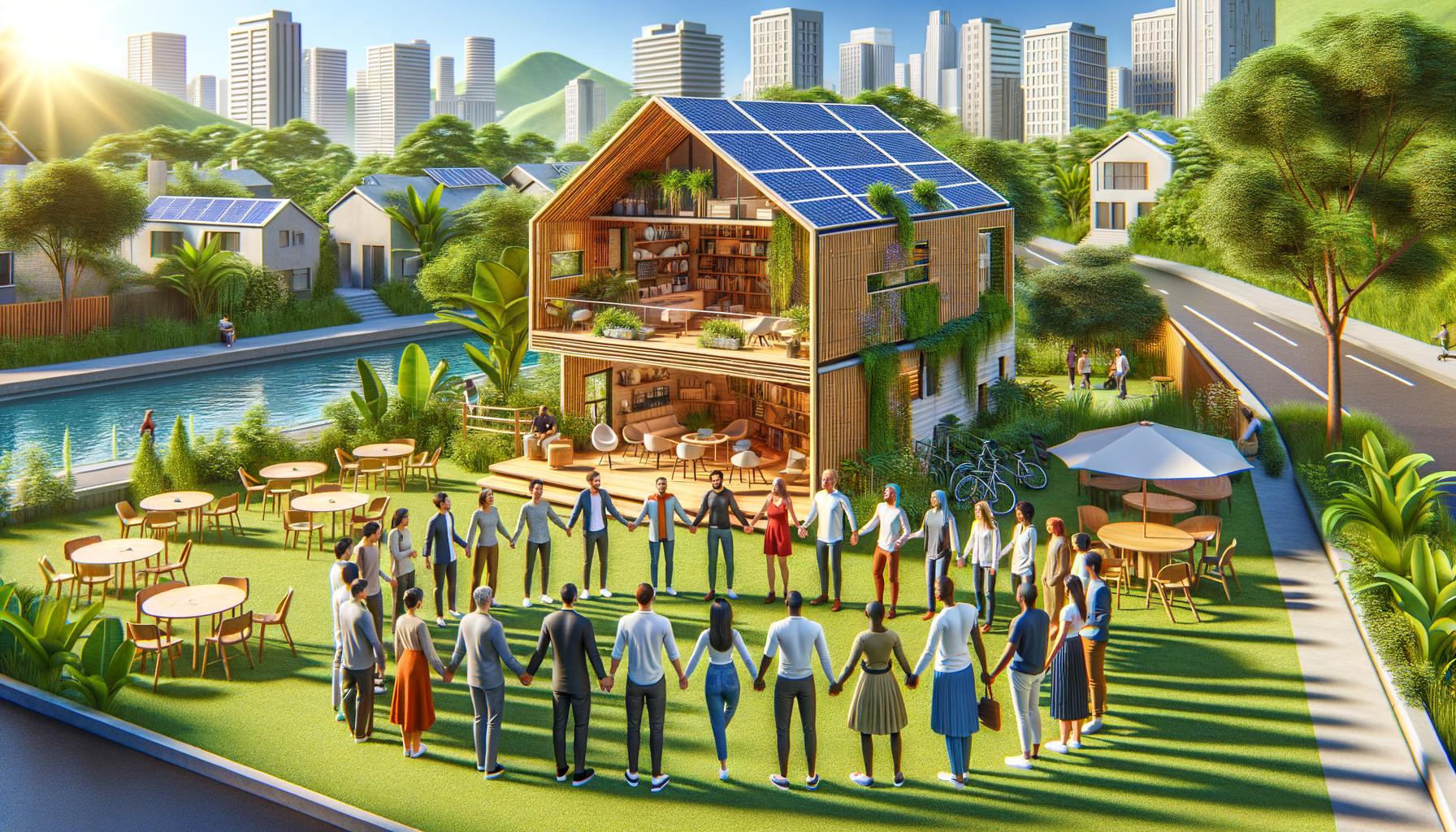
At Home Owners Association, we’re committed to promoting sustainable living practices. The construction industry has a significant impact on our planet, and it’s time to explore environment-friendly building materials.
These innovative alternatives not only reduce environmental harm but also offer long-term benefits for homeowners. In this post, we’ll dive into the world of eco-friendly construction materials and how they can transform your home into a sustainable haven.
What Are Eco-Friendly Building Materials?
Definition and Importance
Eco-friendly building materials form the foundation of sustainable construction. These materials minimize environmental impact throughout their lifecycle, from production to disposal. They are typically renewable, recyclable, or made from recycled content, and often require less energy to manufacture and transport than traditional alternatives.
Environmental Cost of Traditional Construction
Traditional building materials like concrete, steel, and certain types of insulation have a significant environmental footprint. The World Green Building Council reports that buildings are currently responsible for 39% of global energy related carbon emissions: 28% from operational emissions, from energy needed to heat, cool and power them, while 11% comes from materials and construction. These figures highlight the urgent need for more sustainable alternatives in the building sector.
Advantages of Eco-Friendly Materials
Switching to eco-friendly building materials offers numerous benefits:
- Carbon Footprint Reduction: Many sustainable materials (e.g., bamboo flooring or recycled steel) have a much lower embodied energy compared to their traditional counterparts.
- Improved Indoor Air Quality: Low-VOC paints and finishes release fewer harmful chemicals into the air, creating a healthier living environment. Some materials, like sheep’s wool insulation, can even help regulate humidity and filter indoor air pollutants.
- Long-term Cost Savings: While the initial cost of some eco-friendly materials may be higher, they often lead to long-term savings. Energy-efficient insulation materials can reduce heating and cooling costs. Moreover, durable sustainable materials like recycled steel or reclaimed wood often require less maintenance and have longer lifespans, reducing replacement costs over time.
Selecting the Right Materials
When choosing eco-friendly building materials, it’s important to consider the entire lifecycle of the product. This includes its sourcing, manufacturing process, transportation, installation, use, and eventual disposal or recycling. Look for certifications like FSC (Forest Stewardship Council) for wood products or Energy Star for appliances and building materials.
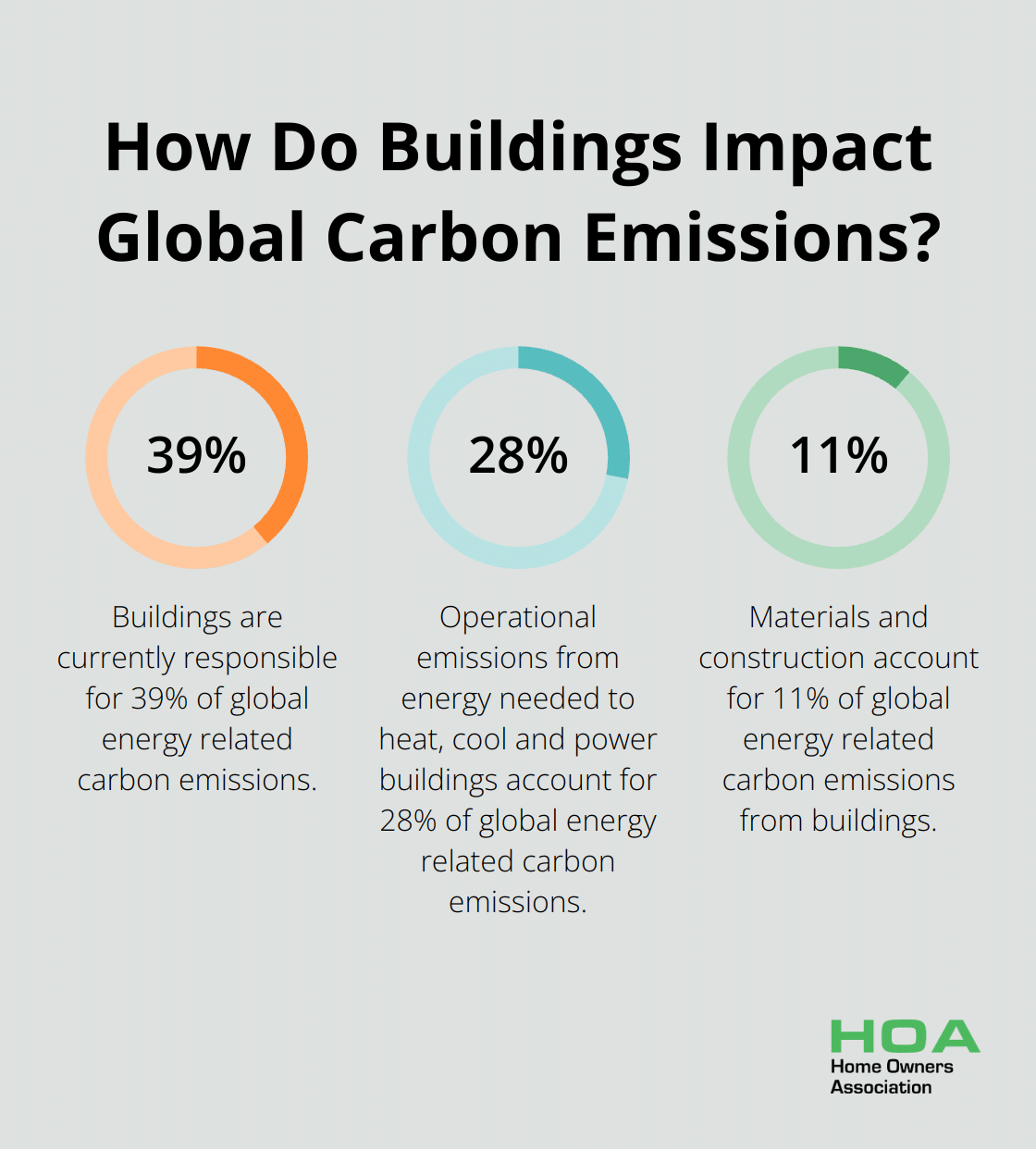
Local availability is another crucial factor. Using locally sourced materials reduces transportation emissions and supports the local economy. For instance, if you’re building in Australia, consider materials like rammed earth or locally sourced timber, which are abundant and have a lower transportation footprint.
As we move forward, let’s explore some of the top eco-friendly building materials that can transform your home into a sustainable haven.
Transforming Homes with Eco-Friendly Materials
At Home Owners Association, we’ve observed a significant shift towards sustainable building practices. Eco-friendly materials are becoming the standard for conscious homeowners. Let’s explore some of the most effective and innovative materials that can make your home more sustainable.
Recycled Steel and Reclaimed Wood
Recycled steel revolutionizes sustainable construction. Using recycled steel to make new steel reduces air pollution by 86%, water use by 40%, and water pollution by 76%. This can significantly reduce your carbon footprint without compromising strength or durability.
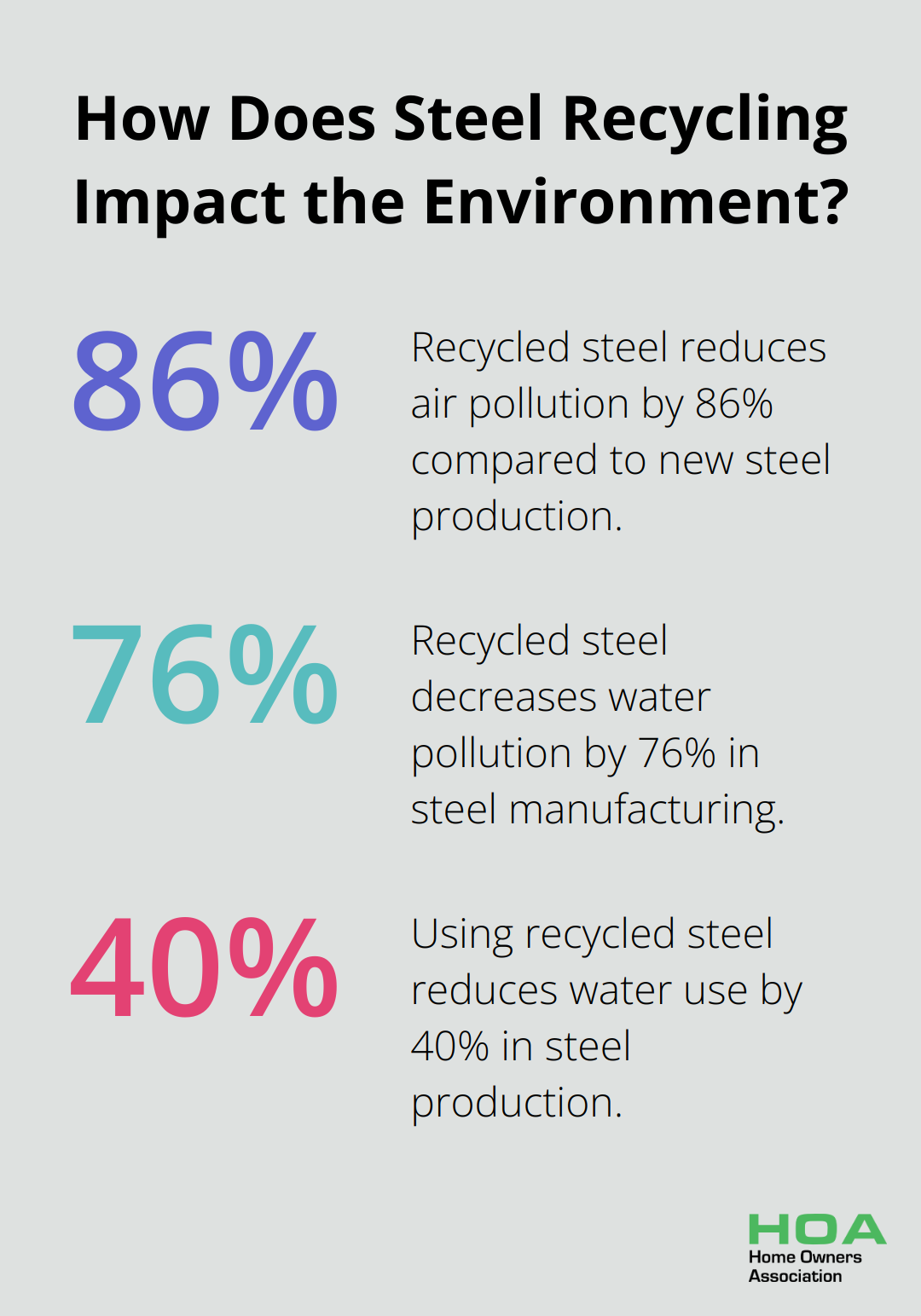
Reclaimed wood is another excellent choice for eco-conscious homeowners. It adds character to your home and reduces the demand for new timber.
Natural Flooring Options
Bamboo and cork rapidly gain popularity as sustainable flooring alternatives. Bamboo grows incredibly fast, reaching maturity in just 3-5 years (compared to 20-120 years for hardwoods). It’s also naturally resistant to water and pests, making it a durable choice for high-traffic areas.
Cork flooring, harvested from the bark of cork oak trees without harming the tree, is another excellent option. It’s naturally antimicrobial, fire-resistant, and provides excellent insulation.
Innovative Insulation Materials
Hempcrete and straw bale insulation revolutionize home insulation. Hempcrete (made from the woody core of hemp plants mixed with lime) provides excellent thermal regulation and is carbon-negative. It absorbs CO2 as it cures, offsetting the carbon emissions from its production.
Straw bale insulation, while not new, gains renewed interest for its superior insulating properties.
Health-Conscious Finishes
Low-VOC paints and finishes are essential for maintaining good indoor air quality. Concentrations of many VOCs are consistently higher indoors (up to ten times higher) than outdoors. Opting for low-VOC alternatives can significantly improve your home’s air quality and reduce health risks associated with prolonged exposure to these chemicals.
Recycled Glass Countertops
Recycled glass countertops are a stunning and sustainable alternative to traditional stone options. These countertops are made from up to 80% recycled materials, diverting glass from landfills. They’re also incredibly durable and resistant to stains, scratches, and heat, making them a practical choice for busy kitchens.
Incorporating these eco-friendly materials into your home creates a more sustainable living space and contributes to a larger movement towards responsible construction practices. The next section will guide you through the process of implementing these materials in your home construction or renovation project.
How to Implement Eco-Friendly Materials in Your Home
Assess Your Home’s Needs
The first step to implement eco-friendly materials is to conduct a thorough assessment of your home’s needs and environmental goals. Evaluate your current energy consumption, identify areas for improvement, and set clear objectives for your project.
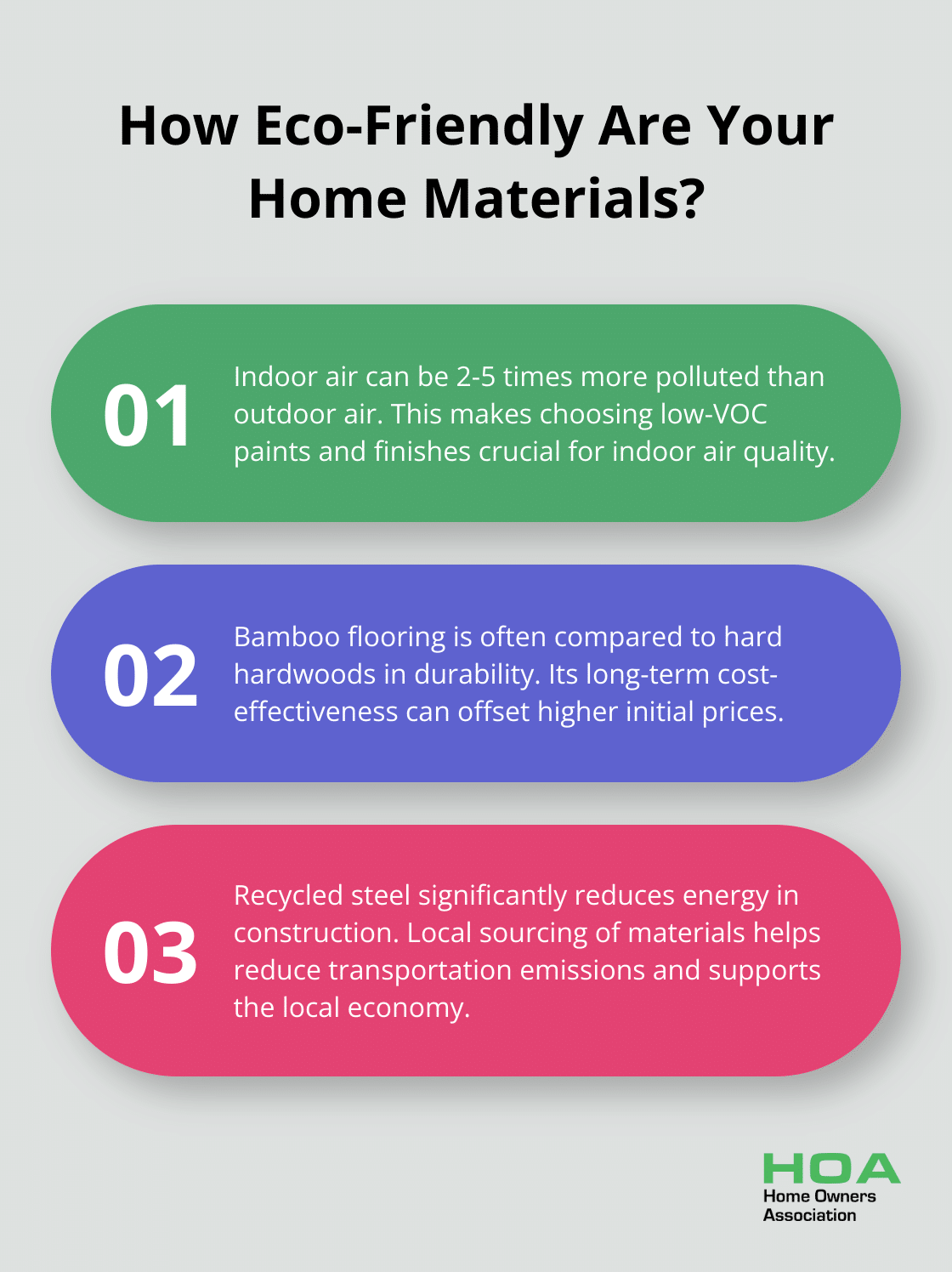
If you want to reduce your energy bills, focus on improving insulation with materials like hempcrete or straw bales. If indoor air quality concerns you, prioritize low-VOC paints and finishes. The U.S. Environmental Protection Agency reports that indoor air can be two to five times more polluted than outdoor air, which makes this a key consideration.
Find the Right Partners
Work with eco-conscious contractors and suppliers to ensure the success of your sustainable home project. Look for professionals who have experience with green building practices and are familiar with the eco-friendly materials you want to use.
Ask potential contractors about their experience with sustainable construction, and request references from previous eco-friendly projects. Inquire about their certifications in green building practices, such as LEED (Leadership in Energy and Environmental Design) accreditation.
Balance Cost and Sustainability
Eco-friendly materials can lead to long-term cost savings, but the initial costs can sometimes exceed traditional options. It’s important to balance your budget with your sustainability goals.
Consider the lifecycle costs of materials, not just the upfront price. For example, bamboo flooring might cost more initially, but its durability and low maintenance requirements can make it more cost-effective in the long run. Bamboo flooring is often compared to some of the hardest hardwoods, but its durability depends on the type of flooring, species, and quality of the manufacturing.
Navigate Building Codes
Implementing alternative materials can sometimes challenge you due to building codes and regulations. These codes ensure safety and structural integrity, but they may not always keep pace with innovations in sustainable building materials.
Before you start your project, research local building codes and regulations. Some areas have specific guidelines for eco-friendly construction, while others may require special permits for using alternative materials.
If you encounter resistance, don’t feel discouraged. Many local authorities now open up to sustainable building practices. Present well-documented evidence of the safety and efficacy of your chosen materials. Organizations like the U.S. Green Building Council can provide valuable resources and data to support your case.
Choose Materials Wisely
Select eco-friendly materials that align with your sustainability goals and home needs. Consider factors such as durability, maintenance requirements, and local availability. For instance, recycled steel offers another excellent option for eco-conscious builders. The use of recycled steel in construction significantly reduces the energy required for production.
Try to source materials locally to reduce transportation emissions and support your local economy. Look for recognized certifications to ensure the materials meet sustainability standards. The Forest Stewardship Council certification, for example, ensures that wood products come from responsibly managed forests.
Final Thoughts
Environment-friendly building materials play a vital role in creating sustainable homes. These innovative alternatives reduce our environmental impact and offer numerous benefits for homeowners. The shift towards sustainable construction is not just a trend; it’s a necessity for our planet’s future.
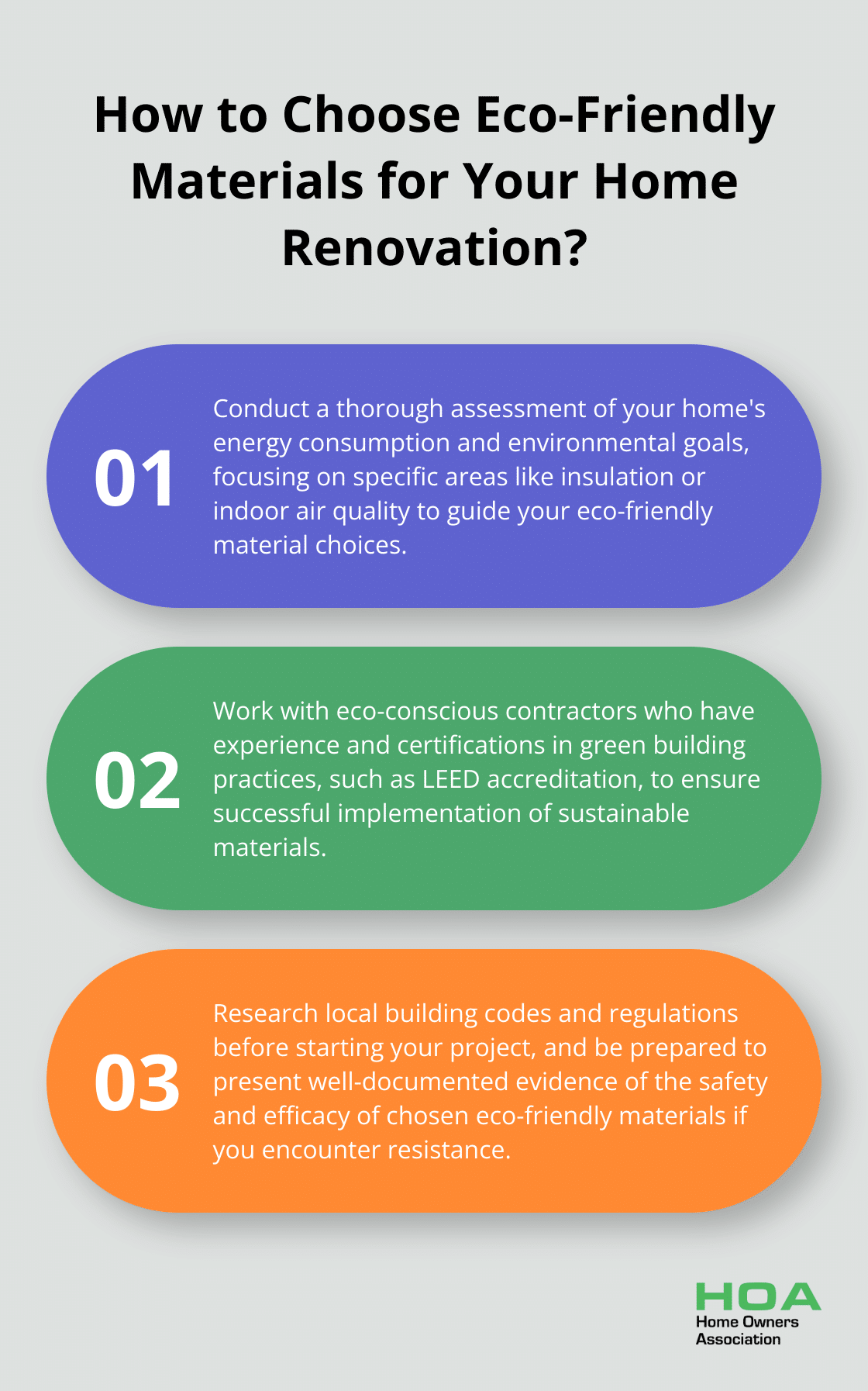
Every choice we make in building or renovating our homes affects the environment. Implementing these materials may present initial challenges, but the long-term benefits outweigh the hurdles. From improved energy efficiency to healthier living spaces, the advantages of eco-friendly materials extend beyond environmental conservation.
We at Home Owners Association encourage all homeowners in Melbourne to consider sustainable choices in their construction and renovation projects. Our team provides expert advice, resources, and support to help you navigate the world of eco-friendly building materials (including recycled steel, reclaimed wood, and low-VOC paints). You can create homes that are beautiful, functional, and kind to our planet.





